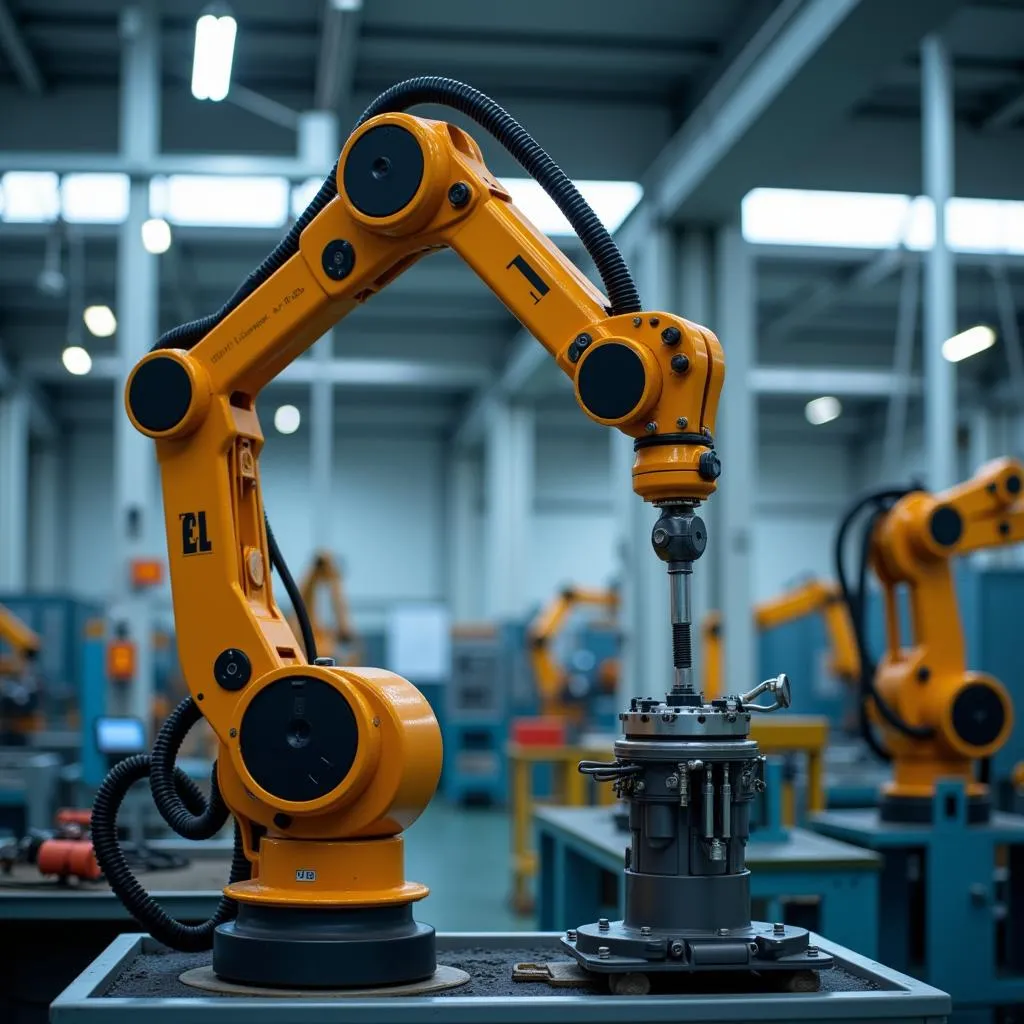The ASEAN region is rapidly embracing the age of automation, with “ASEAN robots” emerging as key players in this technological transformation. From manufacturing hubs to service industries, robots are being integrated into various sectors, promising increased efficiency, productivity, and innovation. But what exactly is driving this surge in robotics adoption in Southeast Asia, and what are the implications for the region’s economic future and workforce?
Factors Driving the Rise of Robots in ASEAN
Several factors are converging to fuel the rapid adoption of robots in ASEAN:
- Labor Shortages and Aging Population: Many ASEAN countries face challenges with labor shortages in specific industries and an aging population. Robots are seen as a solution to bridge this gap, taking over repetitive or physically demanding tasks and allowing human workers to focus on more specialized roles.
- Economic Growth and Rising Labor Costs: As ASEAN economies grow, labor costs have risen, making automation an increasingly attractive option for businesses seeking to maintain competitiveness and optimize production processes.
- Government Initiatives and Investment: Recognizing the potential of robotics, governments across Southeast Asia are actively promoting automation through policy initiatives, investment incentives, and the development of robotics-focused education and training programs.
- Industry 4.0 and Technological Advancements: The Fourth Industrial Revolution (Industry 4.0) is driving a wave of digitalization and automation across all sectors. Advancements in robotics technology, including collaborative robots (cobots) designed to work alongside humans, are making automation more accessible and affordable.
 ASEAN factory robot arm
ASEAN factory robot arm
ASEAN Robots: Transforming Industries and Economies
The impact of robots is being felt across a wide range of sectors in ASEAN:
- Manufacturing: The manufacturing sector, a cornerstone of many ASEAN economies, is at the forefront of robot adoption. Robots are commonly used in assembly lines, material handling, and quality control, boosting production capacity and efficiency.
- Logistics and Warehousing: The e-commerce boom in ASEAN has fueled demand for efficient logistics and warehousing solutions. Robots are increasingly used for tasks like picking, packing, and sorting, streamlining operations and reducing delivery times.
- Agriculture: Facing labor shortages and increasing demand for food production, the agricultural sector is turning to robotics for tasks like planting, harvesting, and crop monitoring, enhancing productivity and reducing reliance on manual labor.
- Healthcare: Robots are playing an increasingly important role in healthcare, assisting with surgeries, dispensing medication, and providing rehabilitation therapy. Their precision and ability to work tirelessly make them invaluable assets in this sector.
The Future of Work: Collaboration, Upskilling, and New Opportunities
While the rise of ASEAN robots presents undeniable opportunities, it also raises concerns about the future of work and the potential displacement of human workers. However, experts believe that rather than replacing humans, robots will primarily augment and transform jobs, leading to the creation of new roles and industries.
- Human-Robot Collaboration: The future of work in ASEAN is likely to be characterized by collaboration between humans and robots. Cobots, designed to work alongside humans, can enhance productivity and safety in various industries.
- Upskilling and Reskilling: To thrive in an automated future, workers will need to adapt and acquire new skills in areas such as robotics programming, data analytics, and artificial intelligence (AI).
- New Job Opportunities: As robots take over routine tasks, new job opportunities will emerge in fields related to robotics development, maintenance, data analysis, and other areas driven by automation.
 ASEAN workers training with robotics
ASEAN workers training with robotics
Challenges and Opportunities for ASEAN Integration
The rise of robotics in ASEAN also presents both challenges and opportunities for regional integration:
- Harmonization of Standards and Regulations: As ASEAN countries embrace robotics, there is a growing need for harmonized standards and regulations related to safety, interoperability, and ethical considerations.
- Collaboration on Research and Development: Regional collaboration on robotics research and development can accelerate innovation and knowledge sharing, enabling ASEAN countries to compete more effectively in the global robotics landscape.
- Bridging the Digital Divide: To fully harness the benefits of robotics, it’s crucial to address the digital divide within and among ASEAN countries, ensuring access to digital infrastructure, skills development, and technology transfer.
Conclusion
The rise of ASEAN robots is transforming industries, economies, and the future of work in Southeast Asia. By embracing automation while addressing potential challenges, ASEAN countries can leverage robotics to enhance productivity, competitiveness, and innovation, positioning the region as a leader in the global technological landscape. The journey toward a more automated future presents both opportunities and challenges, requiring collaboration, forward-thinking policies, and a commitment to equipping the workforce with the skills needed to thrive in this evolving landscape.
